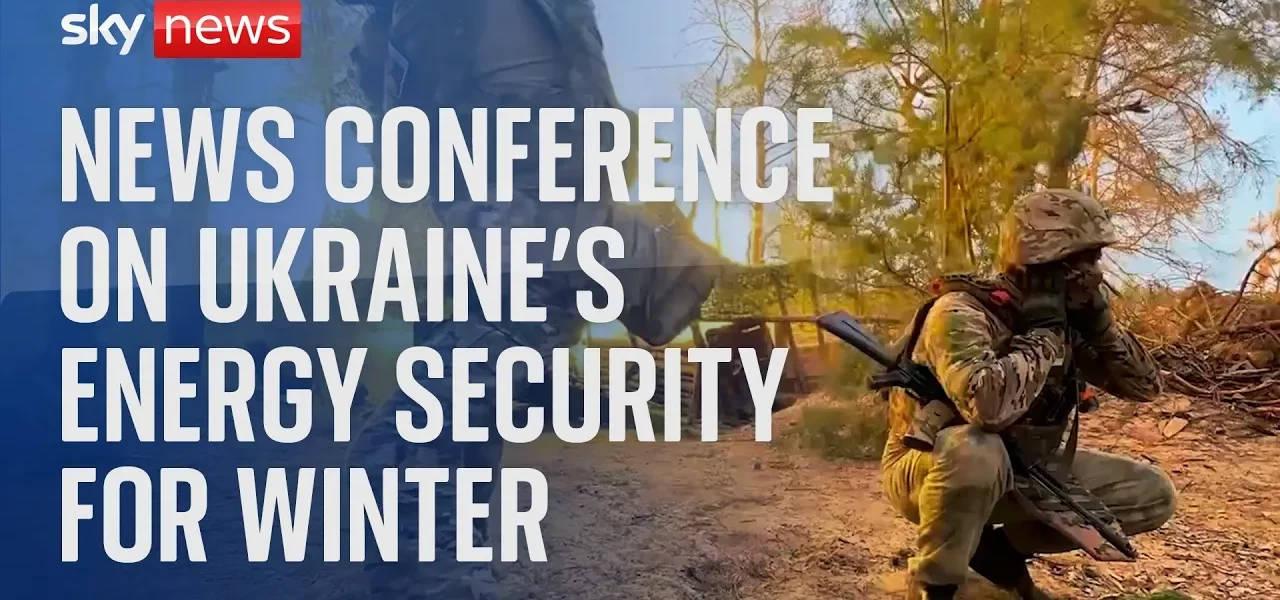Ukraine’s Winter Energy Strategy: Repair, Connect, Stabilize

This article provides a comprehensive overview of Ukraine’s energy requirements for the upcoming winter, detailing repair efforts, electricity exports, and stabilization measures to ensure a resilient energy system amidst ongoing challenges.
Introduction
As Ukraine approaches the winter months, the urgency to address its energy needs has become paramount. With an estimated requirement of 17 gigawatts (GW) of power capacity to maintain essential services and support the population, the country faces unprecedented challenges. The strategy to meet these needs focuses on three critical areas: repair, connection to European grids, and stabilization of energy supply. This article delves into each of these elements, highlighting the collaborative efforts by the European Union and the international community to support Ukraine in this crucial time.
Repair: Restoring Energy Capacity
A significant portion of Ukraine’s energy infrastructure has been heavily damaged, with approximately 80% of thermal power plants destroyed and one-third of hydropower capacity incapacitated. The immediate focus is to restore around 2.5 GW of capacity, which represents about 15% of Ukraine’s winter energy needs. Key repair initiatives include:
- Coordinating support from EU member states through the Civil Protection Mechanism.
- Transporting essential equipment such as power generators and transformers to affected areas.
- Dismantling and relocating a full thermal power plant from Lithuania to Ukraine for reconstruction.
These collaborative efforts exemplify the commitment of the European Union and its member states to bolster Ukraine’s energy resilience during the winter months.
Connect: Exporting Electricity
Another critical aspect of Ukraine’s winter energy strategy is the ability to connect and export electricity. This connection to the European grid was expedited following the onset of the conflict in February 2022. Initially planned over two years, the synchronization was achieved in just two weeks. This connection allows the export of 2 GW of electricity to Ukraine, covering approximately 12% of the country’s winter needs. Notable points include:
Benefits of Connection
- Compensates for power generation losses, particularly from the Zaporizhzhia nuclear plant, now under illegal Russian control.
- Facilitates a more stable electricity supply to hospitals, schools, and residential areas.
- Enhances energy independence and security for Ukraine amidst ongoing conflicts.
Stabilize: Ensuring Continuous Energy Supply
Stabilizing the energy supply in Ukraine involves enhancing decentralized production and integrating renewable energy sources. This approach presents several advantages:
Decentralized Energy Production
By focusing on smaller-scale energy solutions, such as rooftop solar panels, Ukraine can achieve greater energy security. Key initiatives include:
- Installing solar panels in 21 hospitals to ensure uninterrupted energy supply during winter.
- Promoting the use of renewables that are more resilient to attacks than larger centralized infrastructure.
- Providing expertise and support in cybersecurity to safeguard the energy infrastructure.
Financial Support for Energy Resilience
The financial implications of these energy strategies are significant. Since February 2022, support for Ukraine’s energy sector is estimated at around €2 billion, with an additional €160 million announced for this winter. This funding breakdown includes:
- €60 million in humanitarian aid for shelters and heating solutions.
- €100 million allocated for repair works and renewable energy initiatives.
These funds primarily stem from immobilized Russian assets, emphasizing the principle that those responsible for destruction should contribute to rebuilding efforts.
Conclusion
Ukraine’s energy strategy for the winter is a multifaceted approach aimed at repairing damaged infrastructure, connecting to European energy networks, and stabilizing energy supply. With the support of the European Union and international partners, Ukraine aims to cover over 25% of its energy needs through these efforts. As temperatures drop and the heating season commences, continued collaboration and financial support will be vital. We invite readers to stay informed on Ukraine’s energy developments and engage in discussions about supporting energy resilience in the region.
For further reading, check out our articles on Ukraine’s Energy Security and Renewable Energy Solutions for Europe.
“`




